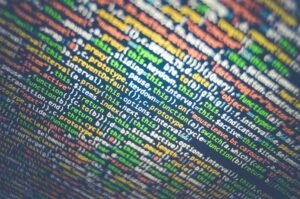Data Analysis Questions for Students
Data analysis is an essential skill in today’s data-driven world. As educators, it is important to equip students with the tools and knowledge to analyze and interpret data effectively. In this article, we will explore a list of data analysis questions that can help students develop their analytical skills and gain a deeper understanding of the data they encounter.
Key Takeaways
- Asking the right data analysis questions is crucial for gaining insights from data.
- Data analysis questions help students develop critical thinking and problem-solving skills.
- Exploring data through various types of questions enhances students’ ability to interpret and make informed decisions.
1. What is your objective? Before diving into data analysis, it is important to clearly define the objective of the analysis. This sets the direction and scope for the entire process and ensures that the analysis aligns with the desired outcome.
For example, if your objective is to understand customer satisfaction, you can ask questions like “What factors contribute to customer satisfaction?” or “What percentage of customers are satisfied with our product/services?”
2. What data do you have? Understanding the available data is crucial for effective analysis. Identifying the relevant variables and understanding their significance helps students make informed decisions and draw meaningful conclusions.
An interesting sentence: It is like solving a puzzle, where each piece of data holds a clue to the bigger picture.
3. How was the data collected? Considering the data collection process is essential to evaluate its reliability and potential biases. Students should question the methods used to collect the data and analyze its impact on the results.
For instance, students may ask, “Was the data collected through surveys or observations?” or “What sampling technique was employed, and what are its limitations?”
Exploring Data Through Questions
4. What patterns or trends can you identify in the data? Analyzing data for patterns and trends helps students identify significant insights and make accurate predictions. They can use visualization techniques like charts and graphs to aid their analysis.
An interesting sentence: By putting data into visual shapes and forms, students can unlock hidden stories behind the numbers.
5. Are there any outliers or anomalies in the data? Outliers are data points that deviate significantly from the general pattern. Identifying and understanding outliers can provide valuable insights into the data and lead to a deeper understanding of the subject being analyzed.
Students can ask questions like “What could be the reasons behind these outliers?” or “Do these outliers have any significant impact on the overall analysis?”
6. Can you spot any correlations or relationships between variables? Investigating the relationships between variables helps students uncover connections and analyze cause-and-effect relationships within the data.
An interesting sentence: Uncovering correlations can reveal surprising insights or confirm existing theories.
Data Exploration Tables
| Product | Sales (in thousands) |
|---|---|
| Product A | 120 |
| Product B | 80 |
| Product C | 150 |
| Age Group | Number of Students |
|---|---|
| 10-12 | 50 |
| 13-15 | 65 |
| 16-18 | 45 |
| Subject | Average Score |
|---|---|
| Math | 85 |
| Science | 92 |
| English | 78 |
7. What insights can you draw from the data analysis? Drawing meaningful insights requires students to critically analyze the results of their data analysis. They need to interpret the findings in the context of the original objective and consider the implications for decision-making.
They may find interesting relationships or patterns that were not initially expected, leading to new questions and areas for further investigation.
8. How can the insights be applied? Lastly, students need to consider how the insights gained from data analysis can be applied to real-world scenarios. This helps bridge the gap between theory and practice and enhances students’ ability to make informed decisions based on data.
An interesting sentence: Data analysis is not just about numbers; it is about utilizing those numbers to improve strategies, policies, and outcomes.
By encouraging students to ask these data analysis questions and guiding them through the process, educators can foster critical thinking, problem-solving, and data literacy skills in students, setting them up for success in the increasingly data-driven world.

Common Misconceptions
Misconception 1: Data analysis is only for mathematicians or data scientists
Many people believe that data analysis is a complex task that can only be performed by professionals with advanced mathematical and statistical knowledge. However, this is a common misconception.
- Data analysis can be learned and applied by anyone interested in understanding and extracting meaningful insights from data.
- Basic knowledge of statistical concepts and tools is sufficient for conducting simple data analysis tasks.
- There are user-friendly software and online tools available that simplify data analysis, making it accessible to a wider audience.
Misconception 2: Data analysis always leads to definitive and conclusive results
Another common misconception is that data analysis always provides clear and definitive answers. However, this is not always the case.
- Data analysis often reveals insights that are open to interpretation and further investigation.
- Data can be subjective, influenced by various factors, and may not always lead to absolute conclusions.
- Data analysis is an iterative process, and results may evolve as new data is gathered or additional analysis is conducted.
Misconception 3: Data analysis is time-consuming and difficult
Some people believe that data analysis is a time-consuming and challenging task that requires specialized skills and extensive technical knowledge. However, this is not entirely true.
- Data analysis can be made more efficient and less time-consuming with the use of appropriate tools and techniques.
- There are various software programs and online platforms that simplify data analysis and automate repetitive tasks.
- Basic data analysis techniques can be easily learned and applied, allowing individuals to derive meaningful insights from data without extensive efforts.
Misconception 4: Data analysis is only useful for businesses or scientific research
Many people assume that data analysis is solely valuable for businesses or scientific research purposes. However, this misconception overlooks the broader applications of data analysis.
- Data analysis can be useful in various fields, including education, healthcare, marketing, social sciences, and more.
- Data analysis helps individuals and organizations make informed decisions, identify patterns and trends, and solve problems more effectively.
- Everyone can benefit from data analysis, as it enhances decision-making abilities and provides evidence-based insights.
Misconception 5: Data analysis requires large amounts of data
Some individuals believe that data analysis is only relevant when dealing with massive datasets. However, this is a mistaken belief.
- Data analysis can be conducted with small or large datasets, as the focus is on extracting meaningful insights regardless of the dataset’s size.
- Data analysis techniques can be applied to study smaller samples or to identify patterns within specific subsets of data.
- Even a limited amount of data can provide valuable insights and help uncover trends and patterns that can inform decision-making.

Data Analysis Questions for Students
As students engage in data analysis, they develop critical thinking skills and gain a deeper understanding of the world around them. This article presents a collection of fascinating tables that explore various data-driven questions. These tables are designed to captivate readers and spark their curiosity.
Table: Global Population Growth
Have you ever wondered about the growth of the world’s population? This table provides a snapshot of the global population at various points in history. From the first billion to the current figure, witness the astonishing growth rate of humanity.
| Year | Population (in billions) |
|---|---|
| 1800 | 1 |
| 1900 | 1.6 |
| 1950 | 2.5 |
| 2000 | 6.1 |
| 2021 | 7.9 |
Table: Annual Rainfall by Country
How does rainfall distribution vary across different countries? Explore the diverse climates of the world by examining the annual precipitation in select nations. From arid deserts to lush rainforests, the amount of rainfall shapes the environments we inhabit.
| Country | Annual Rainfall (in mm) |
|---|---|
| Egypt | 20 |
| Brazil | 1750 |
| United Kingdom | 1150 |
| Australia | 465 |
| India | 1140 |
Table: Endangered Species Distribution
Discover the geographical distribution of endangered species across the globe. This table showcases the number of endangered species in different continents, shedding light on the urgent need for conservation efforts.
| Continent | Number of Endangered Species |
|---|---|
| North America | 856 |
| Asia | 2,567 |
| Africa | 1,743 |
| Australia | 389 |
| Europe | 954 |
Table: Energy Consumption by Source
Explore the sources of energy that power our world. This table presents the percentage of energy consumed by various sources, offering insights into our dependence on fossil fuels and the growing use of renewable energy.
| Energy Source | Percentage of Energy Consumption |
|---|---|
| Coal | 37% |
| Oil | 32% |
| Natural Gas | 22% |
| Renewable Energy | 9% |
Table: Global Internet Usage
Get a glimpse into the world of online connectivity. This table showcases the number of internet users in different regions, revealing the digital divide and the rapid growth of internet adoption worldwide.
| Region | Number of Internet Users (in millions) |
|---|---|
| Asia | 2,627 |
| North America | 356 |
| Europe | 725 |
| Africa | 624 |
| South America | 467 |
Table: Olympic Medal Count
Delve into the world of Olympic sports and national achievements. This table displays the medal count of select countries in the history of the Olympic Games, showcasing their prowess and dedication to sports.
| Country | Gold | Silver | Bronze |
|---|---|---|---|
| United States | 1,127 | 907 | 793 |
| China | 608 | 473 | 452 |
| Russia | 395 | 318 | 296 |
| Germany | 289 | 283 | 290 |
| United Kingdom | 263 | 295 | 293 |
Table: Global Life Expectancy
Discover how life expectancy varies across different countries. This table presents the average life expectancy in select nations, reflecting the impact of healthcare, nutrition, and socioeconomic factors on people’s well-being.
| Country | Average Life Expectancy (in years) |
|---|---|
| Japan | 84 |
| Switzerland | 83 |
| Australia | 82 |
| United States | 78 |
| India | 70 |
Table: Economic Inequality Index
Explore the disparities in wealth and income distribution worldwide. This table features the Gini coefficients, a measure of economic inequality, for select countries. Uncover the economic gaps that exist within societies.
| Country | Gini Coefficient |
|---|---|
| South Africa | 63.0 |
| Brazil | 53.9 |
| Sweden | 27.2 |
| Japan | 32.1 |
| Norway | 25.8 |
Conclusion
Through the exploration of these captivating tables, we have gained valuable insights into a wide range of data-driven questions. We have examined the growth of the global population, climate patterns, environmental concerns, energy usage, digital connectivity, athletic achievements, average life expectancy, and economic inequality. By analyzing data, we can make informed decisions, address pressing issues, and shape a better future. Let these tables serve as a reminder of the power and importance of data analysis in our lives.
Frequently Asked Questions
Data Analysis Questions for Students
What is data analysis?
Data analysis is the process of inspecting, cleaning, transforming, and modeling data in order to discover useful information, draw conclusions, and support decision-making.
Why is data analysis important for students?
Data analysis helps students develop critical thinking skills, enhance problem-solving abilities, and make informed decisions based on objective analysis of information. It also allows them to understand patterns, trends, and relationships within data, which can be valuable in various academic and professional fields.
What are some common methods used in data analysis?
Common methods used in data analysis include descriptive statistics, inferential statistics, regression analysis, clustering, data visualization, and hypothesis testing. Each method serves a specific purpose in examining and interpreting data.
How can students collect data for analysis?
Students can collect data through surveys, interviews, observations, experiments, and by gathering existing data from credible sources such as research studies, government databases, or reputable organizations. It’s important for students to ensure the data they collect is accurate, reliable, and relevant to their research question or topic.
What skills are important for students to excel in data analysis?
Important skills for students to excel in data analysis include strong numeracy skills, proficiency in statistical software such as Excel, R, or Python, critical thinking abilities, attention to detail, data visualization skills, and the ability to effectively communicate findings and insights.
How can students analyze qualitative data?
Students can analyze qualitative data by employing various techniques such as content analysis, thematic analysis, discourse analysis, or narrative analysis. These techniques involve identifying themes, patterns, or meanings in the qualitative data and organizing them in a meaningful way.
What are some challenges students may face during data analysis?
Some challenges students may face during data analysis include dealing with missing or incomplete data, ensuring data privacy and ethical considerations, selecting appropriate analysis techniques, interpreting complex statistical outputs, and effectively managing and organizing large datasets.
What resources are available to students for learning data analysis?
There are various resources available to students for learning data analysis, such as online courses and tutorials, textbooks on data analysis, video lectures, academic journals, and online communities or forums where students can seek guidance and interact with peers or professionals in the field.
How can data analysis benefit students in their future careers?
Data analysis skills are highly sought after in many professions, as they enable individuals to make data-driven decisions and solve complex problems. Students with proficiency in data analysis have better career prospects and can work in fields such as business analytics, market research, data science, healthcare, finance, and many others.
Are there any ethical considerations in data analysis for students?
Yes, there are ethical considerations in data analysis for students. It is important to respect the privacy and confidentiality of participants, ensure data is collected and used responsibly, and adhere to ethical guidelines and regulations. Students should also be aware of potential biases and limitations in their analysis and strive for transparency and accountability in their research.




